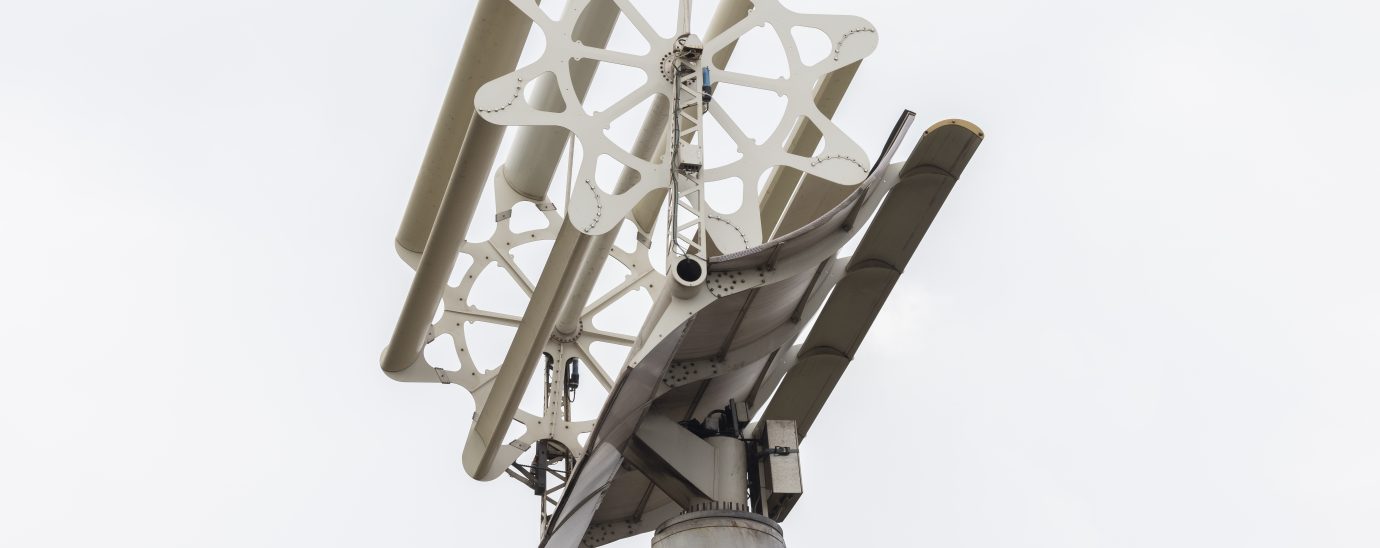How Vodafone is going net-zero with new self-powered masts

Following COP26, Vodafone has announced that they have developed self-powered mobile towers and will deploy these across the UK. They have spent the last two years developing these in partnership with Crossflow Energy, a renewable energy technology specialist. Their collaboration on this project has been Vodaphone’s latest push to hit their target to be net-zero in UK operations by 2027. Their complete aim is by 2030 to Globally (across 21 countries) halve emissions in its supply chain before reaching net-zero across its entire value chain by 2040.
Crossflow Energy has provided Vodafone innovative wind turbine technology; when used with solar energy panels and the latest battery technology, the mobile network towers will be powered by renewable energy.

Increased renewable contribution from wind and solar combined with on-site battery storage systems removes reliance on diesel generators for backup power – will further the reduction of pollution and help the effort to reduce greenhouse gas emissions and reduce the companies’ cost of connecting to the electricity grid. The removal of needing to account for routing and electric grid connection means these ground-breaking Eco-Towers will also enable the deployment of new mobile sites in the most remote locations. Andrea Dona, Chief Network Officer, Vodafone UK, commented, “We are committed to improving rural connectivity, but this comes with some very significant challenges. Connecting masts to the energy grid can be a major barrier to delivering this objective, so making these sites self-sufficient is a huge step forward for us and for the mobile industry.” Showing that they are attempting to solve two issues with the same solution.
Vodafone and Ericsson performed a trial using drones to scan potential areas using high-definition imagery in preparation for their deployment. They create a 3D twin model from which their radio engineers and network design team can then work on. Working on this virtual platform then helps lower costs and minimize travel (only specialists need to visit the actual site) lower their carbon footprint.
Alongside network partner Cornerstone, Vodafone will now run a proof of concept to install Crossflow Turbine technology on rural mobile sites. This trial deployment will run later this year, hoping that adopting innovative renewable technologies will help them realize their goal to be net-zero and their second goal to provide mobile coverage to 95% of Britain’s Landmass by 2025.
When it comes to renewable energy such as solar or wind turbines, many would argue that these would not be consistent due to weather conditions affecting the level of wind or sunshine present at each location. That is where Crossflow Energy’s new unique patented design comes in. Their Transverse Axis wind turbine (created in collaboration with Swansea University) addresses the historical drawbacks of conventional ‘small wind.’ The highly efficient and reliable turbine incorporates a patented shield that delivers optimum lift and drag performance – This has been tested and validated through Computational Fluid Dynamics (CFD) simulations and validated by experimental testing in the MIRA wind tunnel. The simplistic design incorporates low rotational speed and minimal vibration, addressing concerns associated with conventional ‘small wind’ technology, ensuring this works efficiently without creating a negative ecological or environmental effect.
When asked about the partnership Martin Barnes, Chief Executive Officer at Crossflow Energy, said: “We are really excited to be working with Vodafone. It’s a fantastic opportunity to show how our self-powered Eco-Tower solves the problem of harnessing ‘small wind’ to offer not just that all-important carbon reduction but also significant commercial benefits. In the case of Vodafone, it will help to accelerate the expansion of rural connectivity, transform energy consumption patterns, and deliver significant economic and carbon savings. He also pointed out that many companies should follow this example and use similar technology to better their impact on the planet. In his words, “Our turbine technology has equally strong applications for so many other industries, but to have such a high-profile player as Vodafone deploying our Eco-Tower is a major endorsement for us and our technology.”
The hope here is that many other companies see the advantages of new renewable technology and plan a business strategy to become net zero and reduce their carbon footprint. Though this may cost initial financial investment to transfer their systems in the long run, the savings will counteract this factor while showing pride in their effort to save the planet for future generations.
Presently environmental issues such as emission’s effect on the planet are being seen as a significant threat; rising air and ocean temperatures are gradually reducing the total global snow and ice mass and, as a result, increasing sea level. In addition, global warming increases the probability of extreme weather events with impacts on humans and the environment. The present need for more companies to achieve net-zero goals is since we need to slow global warming as a planet. More companies need to act to stabilize the climate, lowering emissions by 45% by 2020 per the 1.5 ºC action plan.
Vodafone, Crossflow Energy, and Cornerstone are undeniably taking a step in the right direction lowering their carbon footprint using this innovative design. In time we will see if they are successful in hitting their coverage target.
Click here to discover more of our podcasts
For more news from Top Business Tech, don’t forget to subscribe to our daily bulletin!
